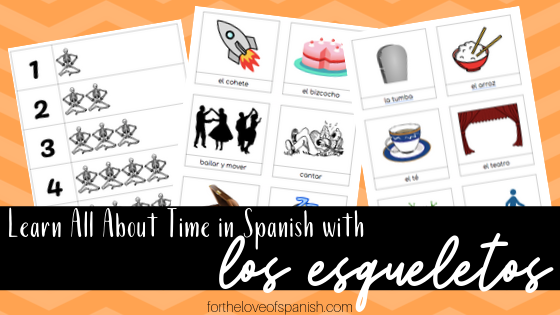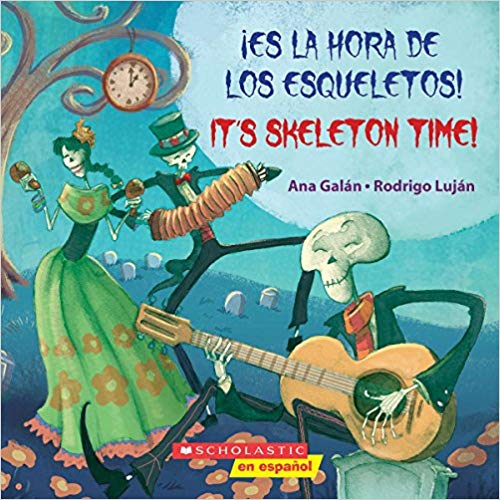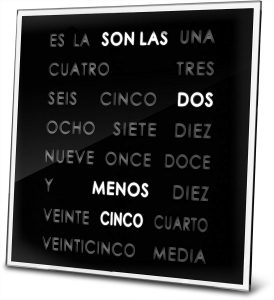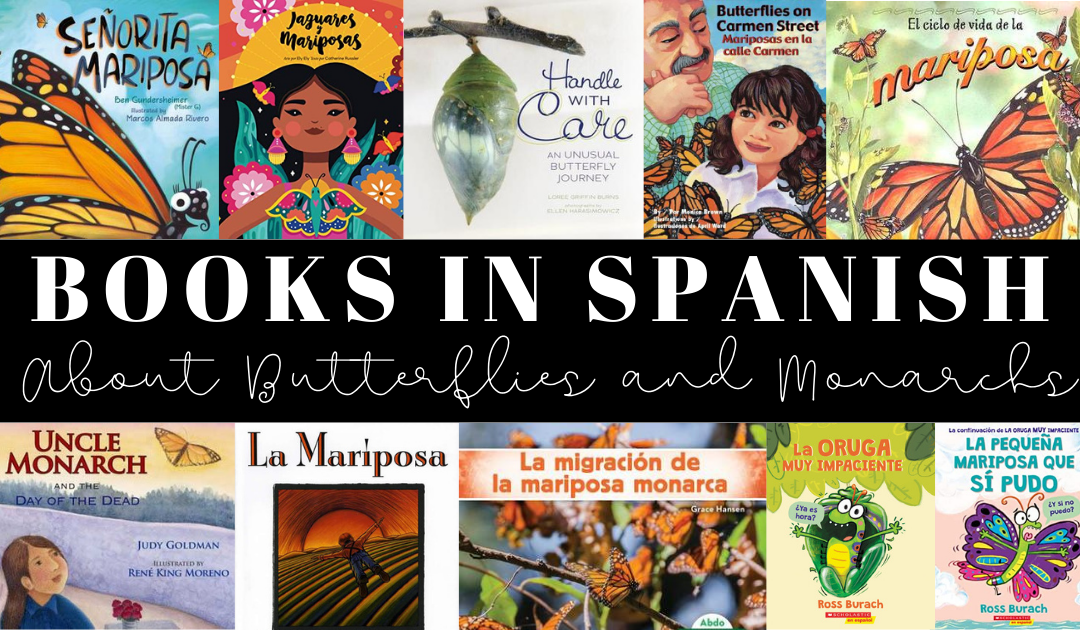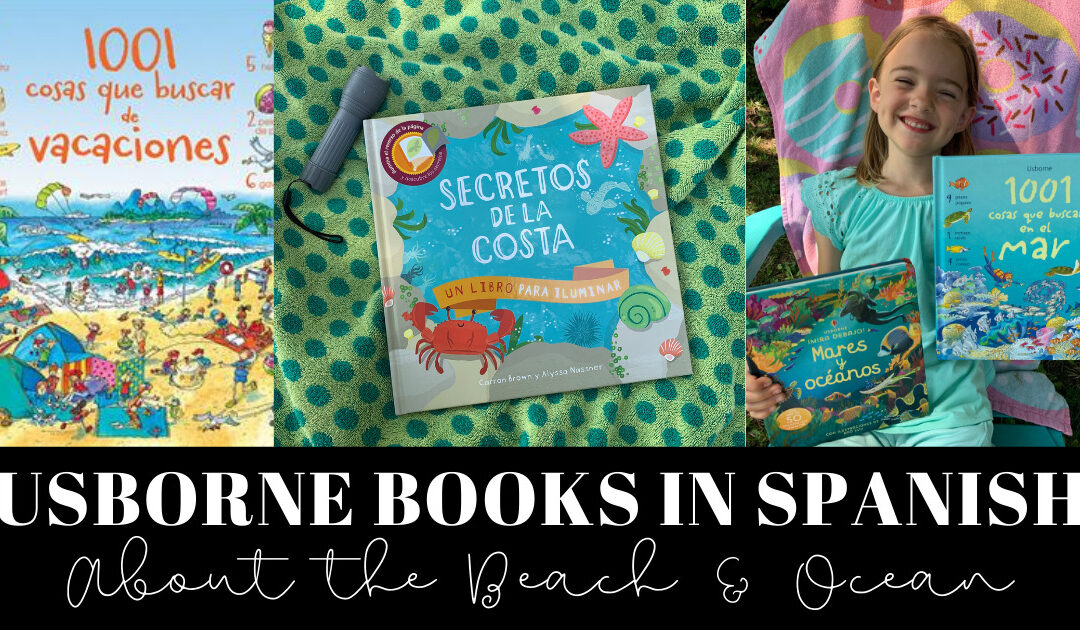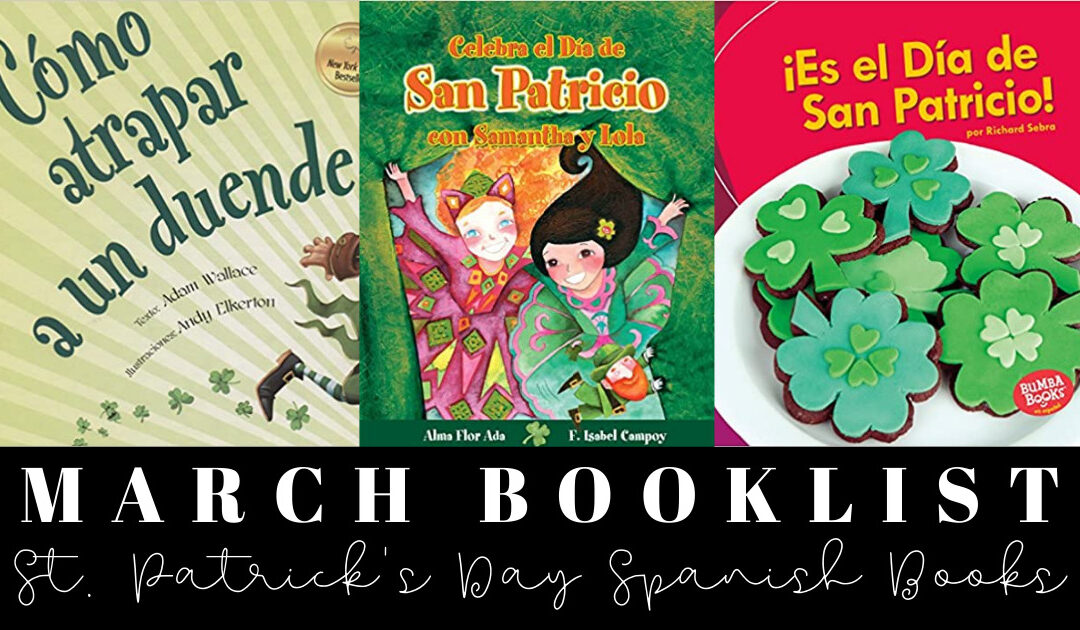It’s Hispanic Heritage Month, y’all!! Every year I like to celebrate with my fellow bloggers from Multicultural Kid Blogs. Don’t miss the great line up of Hispanic Heritage Month articles (listed at the end of this post) that are coming out September 15 through October 15. Be sure to check them all out…I always learn so much!
Today I thought it would be fun to learn a Hispanic cultural tidbit about TIME.
(This post contains Amazon affiliate links.)
Understanding time in Spanish is more than just learning how to tell time. You also need to understand the concept of time held in Spanish-speaking countries. Of course, things always vary from country to country, region to region, and from rural to urban; however, generally speaking, Latinos approach time much more loosely and relaxed than some cultures like the United States, Germany, New Zealand, and others.
Here is a definition I found from the Urban Dictionary that explains it…

My first experience learning about this was having someone explain to me what “ahorita” meant. Ahora in Spanish generally means now. Ahorita comes from the word ahora, and carries a meaning of “in just a little bit,” or “here in a second,” and “just a minute.” Things of that nature. But the actual time is up for interpretation and could mean literally “right now” or “in 30 minutes.”
Watch this funny video from YouTube to understand just how broad of an interpretation we’re talking about.
In my opinion, it’s so FUN to learn about cultural differences. I also believe it’s very important that we don’t leave these things out when we are teaching a second language to our children! The beauty of learning a new language is that it opens our minds to know how one thing can be said many different ways and still be “right.” Just the same with living! There are many different ways to live life and they are all “right”!!
I belong to a Facebook group called “Spanish Teachers in the US.” One of the teachers there mentioned that she does a bellringer where she explains this cultural difference of time between the United States and Mexico. She opened up a discussion to see if others of the teachers had experienced the same difference in other Spanish-speaking countries. Here is what some of them had to say:
“Lived in Miami most of my life and the standing joke was “Cuban time” or real time? I showed up at a party at 8 (time on invite) and I was the only one there, except for the hosts, for a good 45 min.”
I have actually seen “hora inglesa” on a wedding invitation in Perú, meaning 4:30 meant 4:30!!
Yes, we called “la hora Tica” in Costa Rica. It was mainly for social gatherings. For appointments and classes, you had to be more on time.
I just finished a master’s program at Univ. of Salamanca and our Culture teacher made a significant deal about this – if you are on time, you are way early.
Once you’ve explained these neat cultural variances to your kiddos, why not teach them how to tell time in Spanish!!
Since we’re nearing that time of year where Día de los muertos is celebrated…I suggest introducing time with the fun book based on a song from Costa Rica “¡Es la hora de los esqueletos!” It’s very catchy and your kids are sure to love it! Each time the clock strikes, the skeletons do something fun or funny!
You’ll find lots of different version on YouTube with slightly different lyrics or words than the book has, like an traditional song or rhyme words or versions can vary by region or family.
You can watch a few versions on YouTube to learn the tune, then sing the words as you read them from the book, or you can just read the book without sining!
After reading the book and hearing the song, you and your kids might be interested in learning how to tell time in Spanish. This can get a little tricky, so I suggest just learning how to say each hour first! For kids ages birth to 9-years-old this is still an emerging skill in your first language, so if the kids don’t feel it’s fun, don’t worry and just come back to the concept later!
One great way to introduce a new thing to your children is to learn it yourself first, and then start integrating it into your daily life instead of trying to sit down and do a lesson about it…I would say sit-down lessons are more for ages 10 and up (when it comes to a second language)!
If you would like to study telling time in Spanish here are a few good places to start:
Señor Jordan – Telling Time in Spanish Explanation (Basic)
How to Tell Time in Spanish (Best for older students or adults)
Another great way to practice telling time in Spanish is to get this awesome clock!! It shows the time in words, so you don’t have to think about how to say it. It doesn’t show each minute, so you’ll have to round to the nearest five. For example, it can say “10:05,” 10:10,” “10:15,” 10:20,” “10:25,” “10:30,” “10:35,” “10:40,” “10:45,” “10:50,” and “10:55.”
Lastly, you can use this printable I made with some of the main vocabulary words from the book, skeletons for practicing counting, and some matching cards for learning to tell time with clocks!!
>>> LOS ESQUELETOS PRINTABLE PACK <<<
I laminated the time strips and clocks and put velcro on them so my kids can put them on and take them off for practice! (See below.)
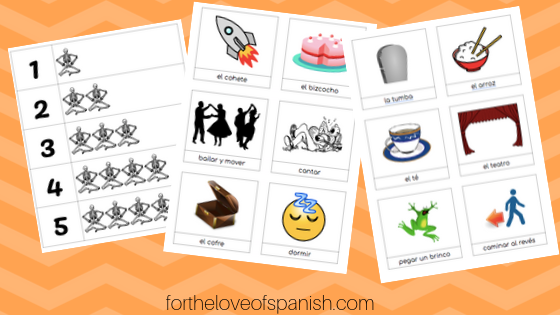
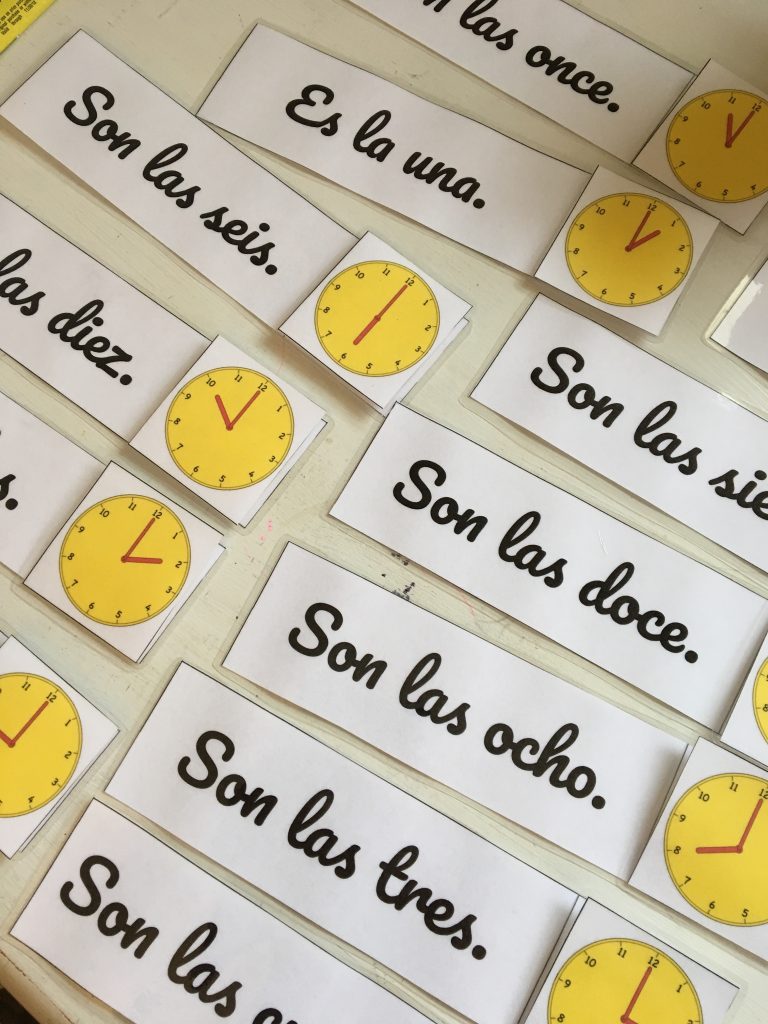
 We are so excited for our eighth annual Hispanic Heritage Month series! Now through October 15, you’ll find great resources to share Hispanic Heritage with kids, plus you can link up your own posts on Hispanic Heritage!
Find even more ideas on our Latin America Pinterest board:
We are so excited for our eighth annual Hispanic Heritage Month series! Now through October 15, you’ll find great resources to share Hispanic Heritage with kids, plus you can link up your own posts on Hispanic Heritage!
Find even more ideas on our Latin America Pinterest board:
September 16 Pura Vida Moms on Multicultural Kid Blogs: Celebrating Latino Culture
September 17 Discovering the World Through My Son’s Eyes: Julia de Burgos, Puerto Rico’s Most Famous Latina Poet
September 18 Hispanic Mama: Raising Kids to Be Proud of Their Latino Heritage
September 19 Spanish Playground: Spanish Tongue Twisters for Kids
September 20 MommyMaestra: Tito Puente Lesson Plans, Coloring Pages, Crafts, Activities and More
September 23 Kids Spanish Book Club: Five Bilingual Picture Books
September 24 Embracing Diversity: 21 Inspirational Quotes by American Latinos To Uplift & Empower
September 25 el Mundo de Pepita
September 26 Little Nómadas: Quesillo Venezolano
September 27 De Su Mama
September 30 Baby Devotions
October 1 For the Love of Spanish
October 2 Tiny Tapping Toes
October 3 LadydeeLG
October 4 Bicultural Familia
October 7 Spanish Mama
October 8 The Multilingual Home
October 9 Bookworms and Owls
October 10 Jeddah Mom
October 11 Pretty Mama Breastfeeding
October 14 Multicultural Kid Blogs
October 15 Maritere Bellas
Don’t miss all of the great posts from previous years as well: 2012, 2013, 2014, 2015, 2016, 2017, and 2018.

